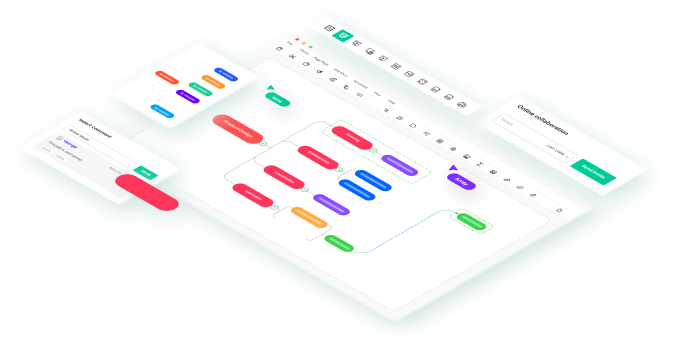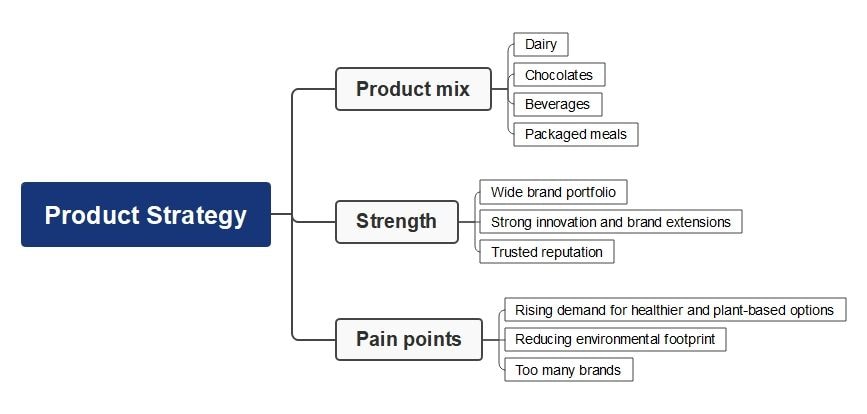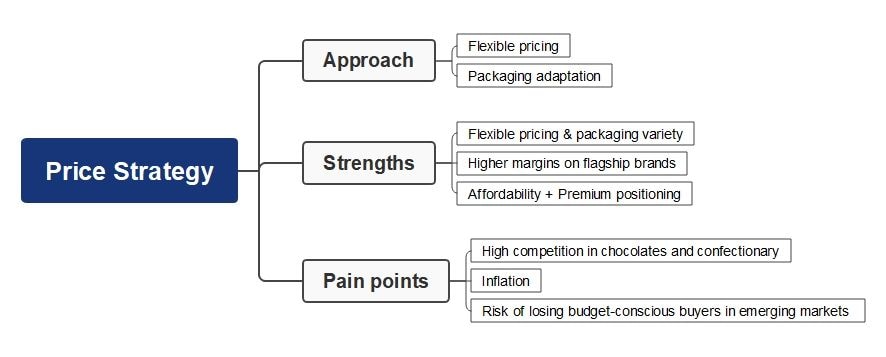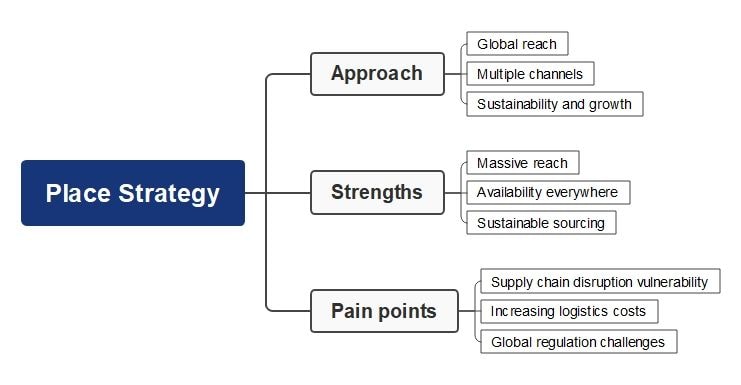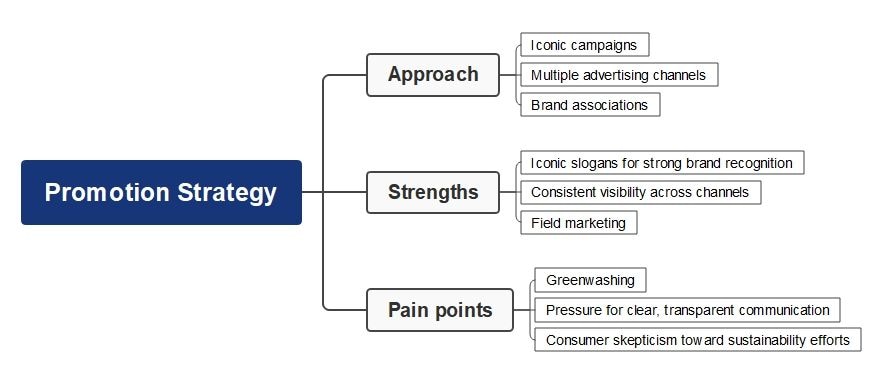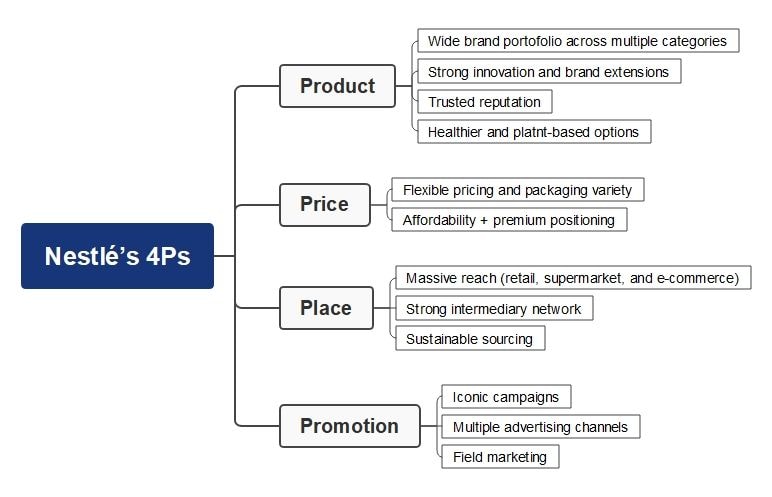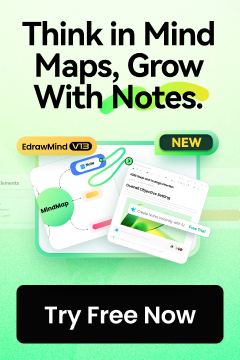Nestlé, the world’s largest food and beverage company, thrives through strategic marketing. This article analyzes its 4Ps—product, price, place, and promotion—to reveal how Nestlé sustains global growth and competitiveness.
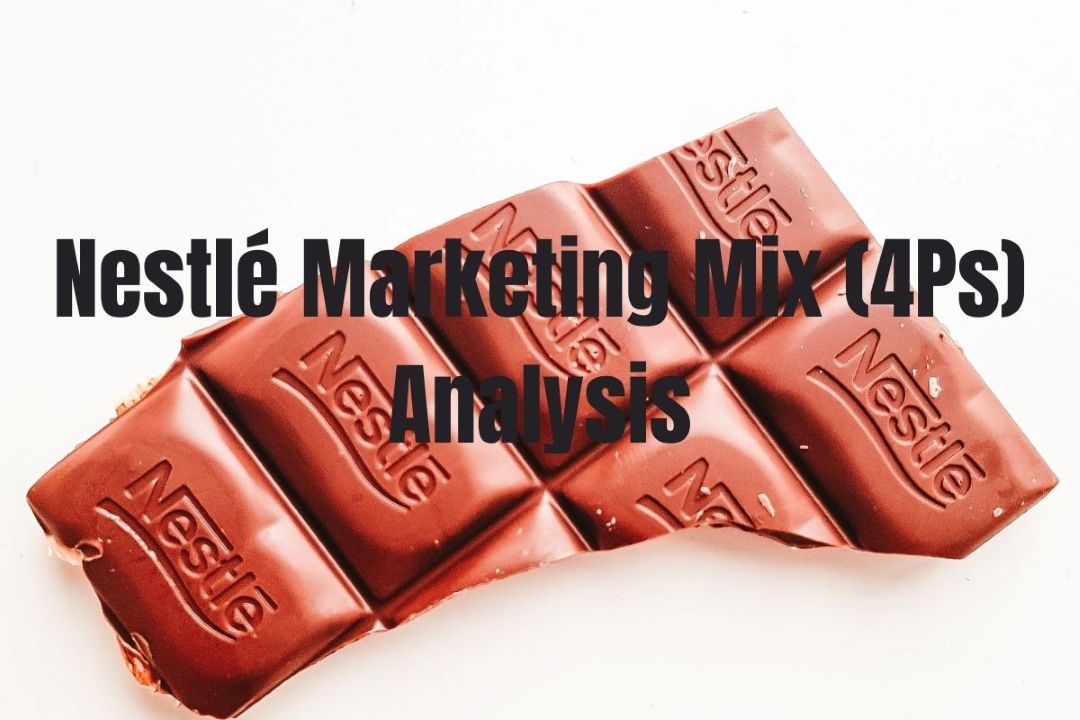
In this article
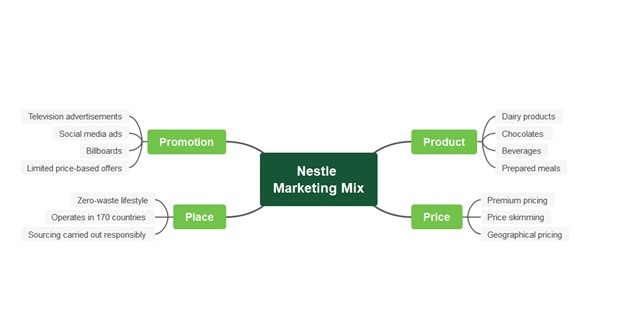
Overview of Nestlé
Nestlé, the world’s largest food and beverage company, offers trusted products like Nescafé, KitKat, Milo, and Maggi. Headquartered in Vevey, Switzerland, it reported CHF 91.35 billion in 2024 and CHF 21.6 billion in Q2 2025, demonstrating resilience amid challenging global markets.
Nestlé’s success comes from its smart marketing mix—creating new products, fair pricing, strong distribution, and memorable ads. Although growth was slow in 2024, the 2025 plan focuses on profit, new ideas, and staying strong in the market.
This article explores Nestlé’s marketing mix in depth, analyzing how product, price, place, and promotion strategies shape its global dominance. By examining these elements, this article uncovers the key drivers behind Nestlé’s long-term growth and industry influence.
But first, here’s a quick overview of the company:
| Aspect | Information |
| Founded | 1866 |
| Headquarters | Vevey, Switzerland |
| CEO | Philipp Navratil |
| Annual Revenue | $100.4 billion USD (end of fiscal year 2024) |
| Market Cap | $243 billion USD |
| Industry classification | Food and beverage, Food processing, Consumer Packaged Goods (FMCG) |
| Latest Growth | -1.8% |
| Official Website | Nestlé.com |
Nestlé’s Product Strategy
Nestlé’s product strategy is its biggest strength, as it owns around 8,000 brands across multiple food and beverage categories. This wide portfolio allows it to serve different customer needs, from basic nutrition to indulgent treats.
Product Mix
- Dairy products – Nestlé Milk, Nestlé Everyday, Nestlé Slim
- Chocolates – KitKat, Munch, Éclairs, Polo, Milky Bar, Alpino (gifting segment)
- Beverages – Nescafé (world’s most popular coffee brand)
- Prepared meals – Maggi noodles, pasta, sauces, and other ready-to-cook foods
Nestlé’s Price Strategy
Nestlé uses a flexible pricing approach to appeal to both premium and budget-conscious customers. Premium brands like Nescafé are priced higher to signal quality, while products such as Maggi or KitKat singles are made affordable for mass consumption.
The company also tailors packaging to fit budgets. This pricing flexibility is one of Nestlé’s key competitive advantages, as it allows the brand to serve diverse income groups across developed and emerging markets.
Nestlé’s Place Strategy
Nestlé’s global distribution network is among the strongest in the world. With operations in 187 countries and over 308,000 employees, its products reach consumers through retail shops, supermarkets, convenience stores, and increasingly, e-commerce.
The company emphasizes responsible sourcing and sustainable supply chain practices, including a commitment to zero waste and food safety standards. Nestlé also grows through acquisitions, ensuring that its products are accessible worldwide, from small rural shops to large urban chains.
Nestlé’s Promotion Strategy
Nestlé is famous for its creative and memorable advertising campaigns. The “Have a Break, Have a KitKat” slogan is recognized globally, while Maggi’s “2-minute noodles” campaign cemented the brand’s place in households.
The company also invests in multiple promotional channels, including TV, posters, print ads, and digital campaigns, ensuring consistent visibility. By associating its products with convenience, enjoyment, and family moments, Nestlé has made them part of everyday life across generations.
Nestlé’s Marketing Mix (4Ps)
Nestlé’s marketing mix demonstrates how a global giant balances innovation, affordability, distribution, and branding. With a massive product portfolio, flexible pricing, vast distribution channels, and iconic promotions, it adapts to diverse markets while facing challenges like sustainability demands and consumer skepticism.
This mind map summarizes Nestlé’s strengths and pain points across the 4Ps—product, price, place, and promotion. It highlights how strategic decisions drive global success while pinpointing areas needing innovation, transparency, and resilience in today’s competitive and shifting consumer landscape.
How To Create a Marketing Mix Analysis Mind Map
Nestlé, the world’s largest food and beverage company, is behind household names like Maggi, KitKat, and Nescafé. Analyzing its marketing mix matters because it reveals how strategic choices drive global growth, customer loyalty, and long-term industry leadership.
Marketing analysis helps businesses understand what works and what needs improvement. By checking the product, price, place, and promotion, companies can make better decisions, attract more customers, and stay strong even in tough competition.
Mind maps are useful for organizing ideas, like a company’s marketing mix. You can draw them by hand, use software, or rely on smart tools. The easiest option is using automated programs like EdrawMind, which saves time.
Use a Professional Analysis Mind Map Maker
Here’s something you don’t hear every day: You don’t need to draw mind maps from scratch anymore!
With Wondershare EdrawMind, AI tools, built-in icons, and ready-to-use templates, you can quickly design clear and professional marketing mix analyses with less effort.
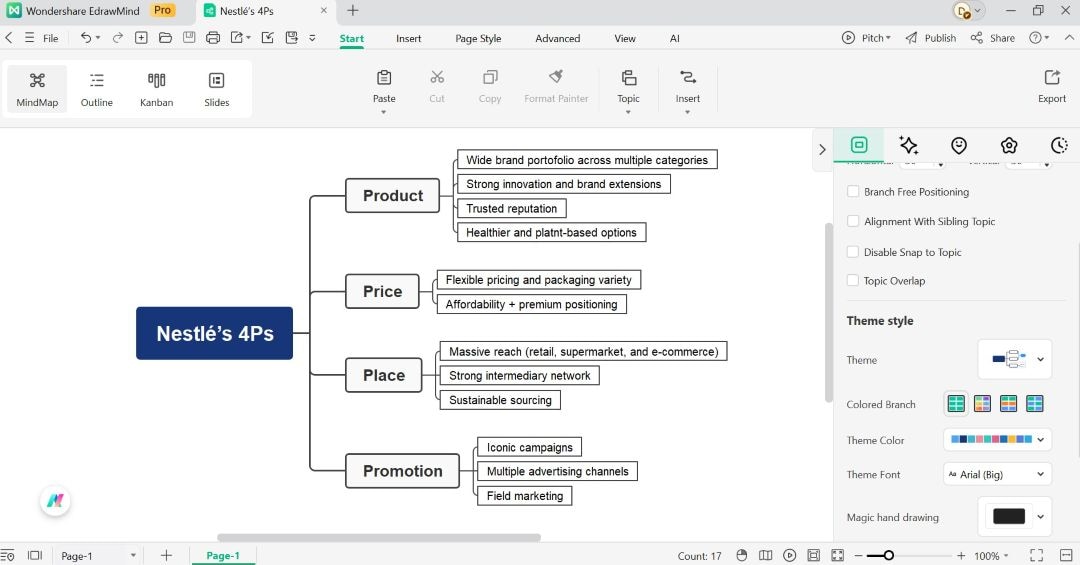
Steps To Make an Analysis Mind Map
To create an analysis mind map, follow these simple steps:
Step 1: Click Create > Blank Mind Map to create a mind map.
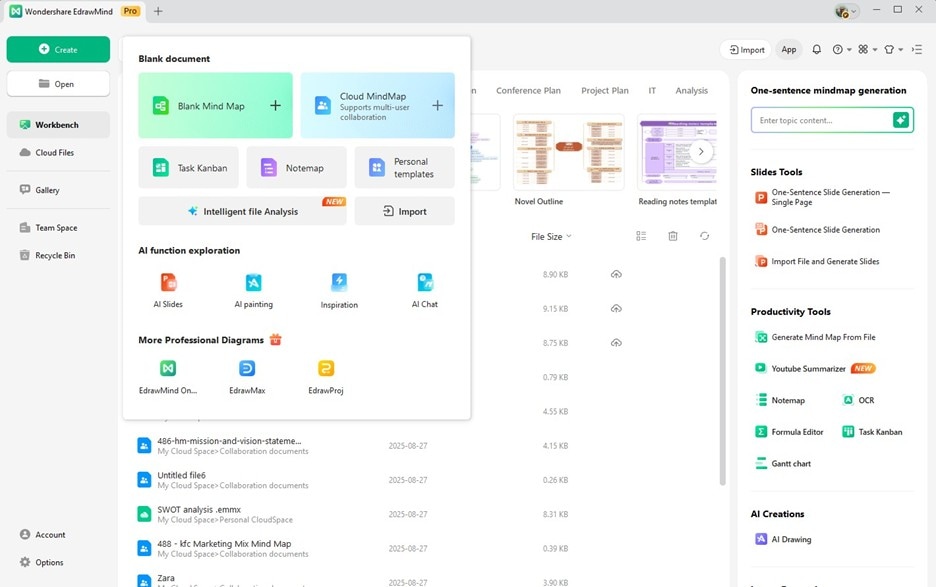
Step 2: Then, edit the Main Idea to specify the aspect that you want to analyze. For example, you can use “Nestlé’s 4Ps.”
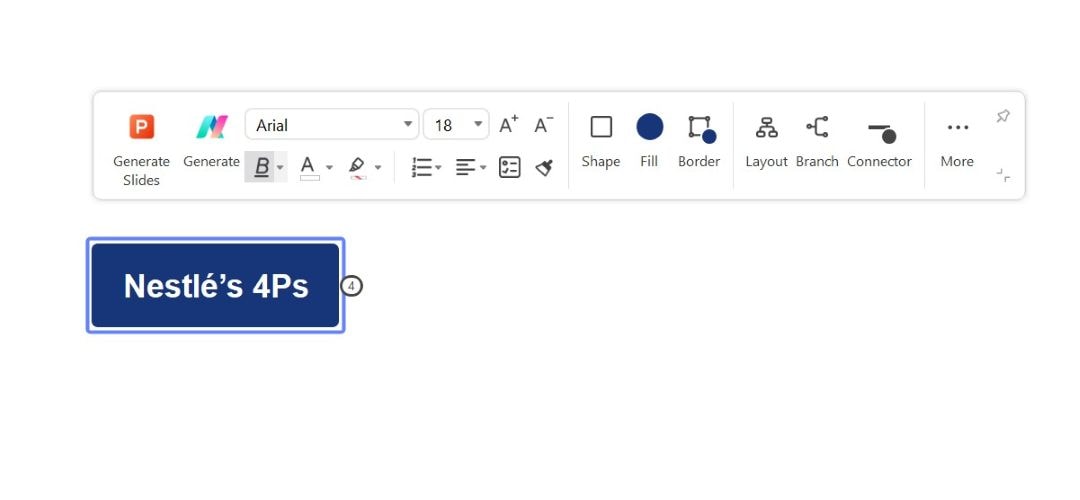
Step 3: Add the main branches to show the main segments of the analysis. To add more main branches, press the Enter key. You can also add subtopics to expand on the idea by pressing the Tab key.
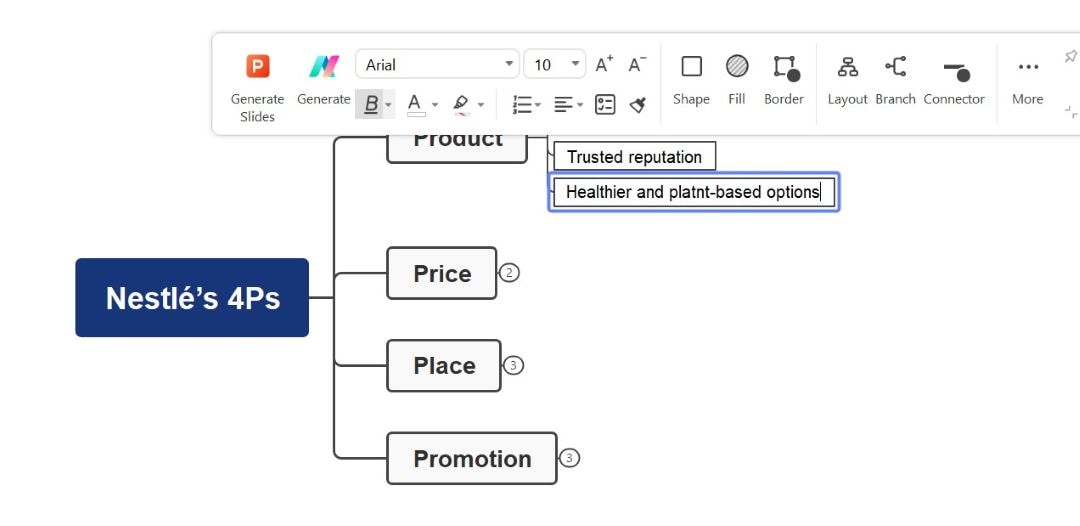
Step 4: Change the theme or layout, or add images or icons to improve your diagram's visual appeal and add more information.
Step 5: Export and share with your friends via PDF, JPG, or other file formats supported by EdrawMind.
Tips When Making an Analysis Mind Map
- Start with the 4Ps – Put Product, Price, Place, and Promotion at the center, then branch out into details for each category to keep ideas organized.
- Use hierarchy and keywords – Break down each P into sub-points, using short keywords so the map stays simple and easy to follow.
- Add visuals and structure – Use icons, colors, or highlights to show connections and make the map more engaging.
- Use digital tools – Try tools like EdrawMind with templates, AI features, and collaboration options that make creating professional marketing mix mind maps faster and easier.
FAQ
-
1. What are Nestlé’s most popular products worldwide?
Some of Nestlé’s most recognized brands include Nescafé (the world’s top coffee brand), KitKat and Munch chocolates, Maggi noodles and sauces, and Nestlé Milk products. These items have strong global recognition and drive much of the company’s sales. -
2. Does Nestlé use genetically modified organisms (GMOs) in its products?
Nestlé sells products in many countries, and each country has its own food regulations. In some places, Nestlé uses ingredients made from GMOs if local laws allow it. However, in countries that ban GMOs, Nestlé follows the rules and avoids them. The company also clearly labels its products so customers can make informed choices. -
3. Who are Nestlé’s biggest competitors?
Nestlé competes with other large food and drink companies around the world. Its biggest competitors include Unilever (known for Dove and Lipton), PepsiCo (maker of Pepsi and Lays), the Coca-Cola Company, and Mondelez International (owner of Oreo and Cadbury). These companies challenge Nestlé in snacks, beverages, and packaged foods.



